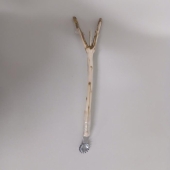
 2
2




 3
3




Kevin Goedeke wrote:Alright, let me have it! What do you like, dislike, and where am I way off with these instructions?
"Study books and observe nature; if they do not agree, throw away the books." ~ William A. Albrecht

 3
3




Some places need to be wild




 4
4




 2
2








I have Hobbit feet, but if I keep them shaved, no one notices.
 1
1






















Some places need to be wild




Redd said "Consider adding info on determinate vs. indeterminate.
Invasive plants are Earth's way of insisting we notice her medicines. Stephen Herrod Buhner
Everyone learns what works by learning what doesn't work. Stephen Herrod Buhner




Bless your Family,
Mike

| I agree. Here's the link: http://stoves2.com |







